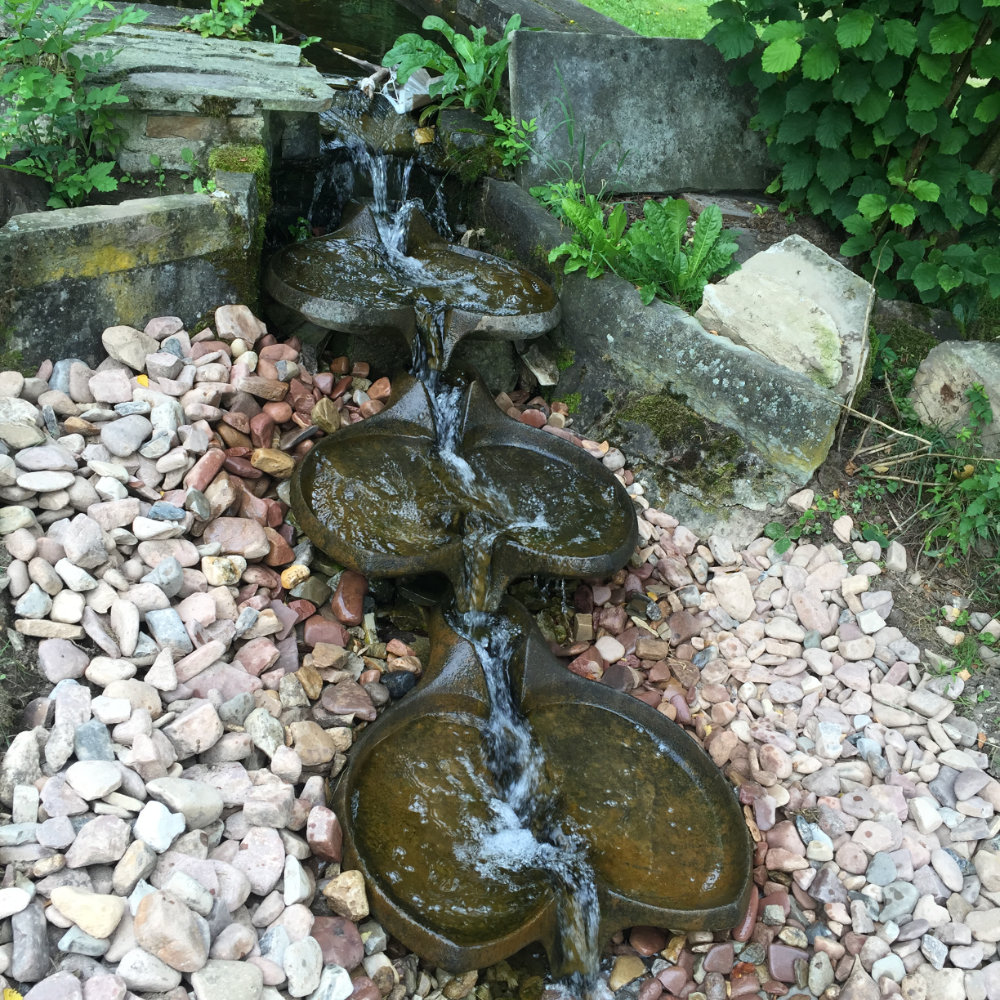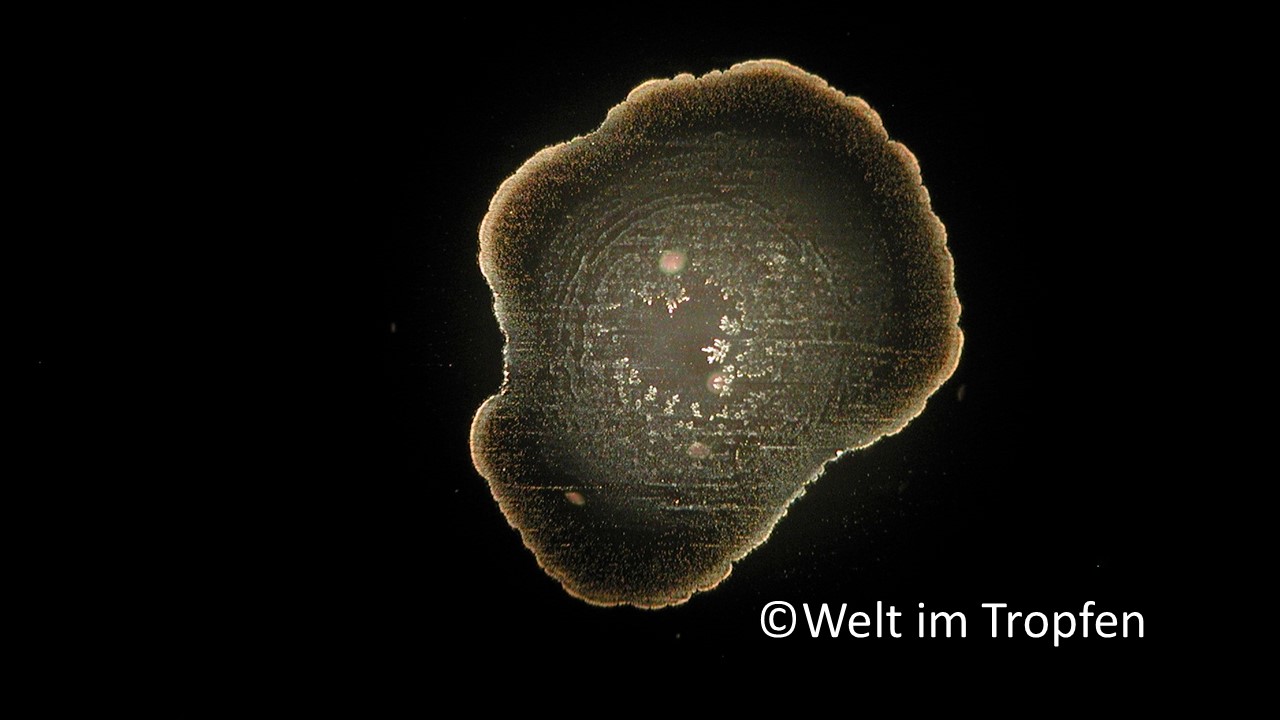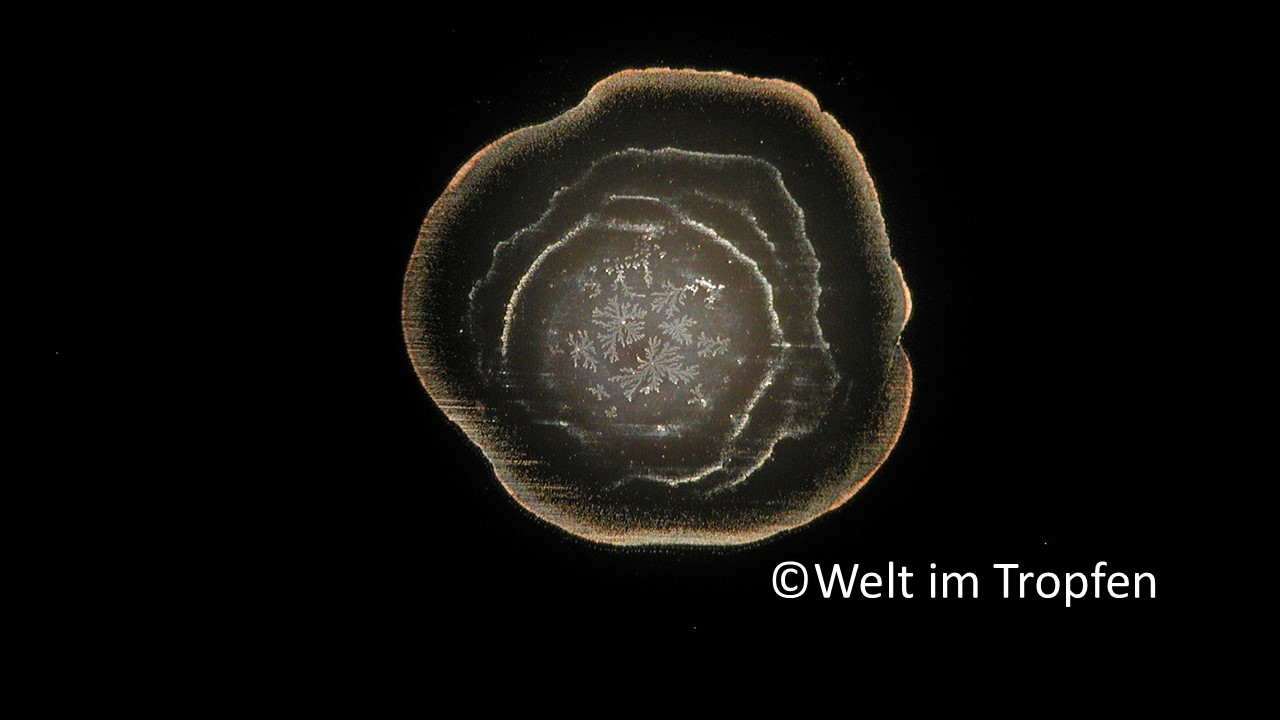Let's take a closer look under the dark field microscope, e.g. at the so-called flow forms:
Flowforms are flat, leaf-shaped bowls through which water cascades from top to bottom: the special shape of the heart-shaped bowls causes the water to swirl and swirl.
John Wilkes began developing these flowforms in the 1970s. These were based on his observations of the natural flow patterns of water and his conviction that water could be vitalised through certain movement patterns. The Flowforms were intended to imitate the natural flow of water in an orderly, rhythmic pattern that would have a positive effect on the quality and structure of the water.

Wilkes carried out numerous experiments with different vessel shapes and flow patterns to find out how water behaves in certain shapes. He discovered that the lemniscate-shaped movement (figure of eight) was particularly harmonious and natural for the water. This movement can be found in most of his flowforms.

Flowforms are based on hydrodynamic principles, among others: Turbulence and laminar flow. The water movement in the flowforms is a combination of laminar and turbulent flow.
Laminar flow is the flow in parallel layers in which the water flows evenly without major turbulence. It occurs in the quieter areas of the flow mould shells, particularly at the inlet and outlet of the water.
Turbulent flow occurs as the water moves through the shells; here the water is deliberately caused to swirl, resulting in an alternation between laminar and turbulent flow. These transitions between the two types of flow are a central feature of flowforms.
The change from laminar to turbulent flow increases the oxygen supply to the water and improves the mixing within the liquid. This is important for the process of vitalisation, which aims to return properties to the water that it might have in natural watercourses by maximising interactions with the air.
The central movement in the flowforms is the lemniscate or eight-form movement. This movement is a form of non-linear dynamics that occurs in fluid mechanics. The shape of the vessel causes an oscillation between two poles, whereby the water oscillates from one side to the other before flowing downwards. This movement is similar to a chaotic pendulum that swings in two directions and constantly changes its trajectory.

In physical terms, this movement is an example of self-organised pattern formation.
In nature, similar movements occur when a fluid flow is free to interact. The periodic structure in the flowforms promotes this movement in a predictable yet complex way.
The turbulence in the flowforms causes intensive mixing of the water with air, which increases the oxygen content. From a chemical point of view, this is particularly important for water quality, as increased oxygen saturation supports the decomposition processes of organic substances and makes the water less susceptible to anaerobic processes, which can lead to the formation of unpleasant odours and harmful substances.
The movement of the water along the spiral paths maximises contact with the air, resulting in increased absorption of oxygen molecules at the surface of the water. This process is not only aesthetically pleasing, but has also been proven to improve the biological quality of the water.
In our ‘World in a Drop’ water research project, we analysed different water samples: before the water flowed through three flowforms from the upper water basin and after the water flowed through three flow moulds that had been created one after the other.
In other words, we took water samples from the upper basin, which had not yet flowed through the flow moulds, and water samples from the lower basin: in the latter, the water had already flowed through three flowforms.


Two photos under the dark-field microscope in comparison: water droplets before and after flowforms (from our research: World in a Drop) show different water droplet structures under the dark-field microscope before and after flowing through three flowforms. The internal structure of the water droplets shows a clear change, and the edge of the droplets has also undergone a clearly visible phenomenological change (photos: Henschel, World in a drop).
A change in the image of the water droplet structure before and after flowing through the flowforms is clearly visible under the dark-field microscope. It can be seen that the application of the flowform turbulence (application of the lemniscate) in the special flowforms changes the water in a sustainable and visible way. Turbulence and whirls also occur naturally in rivers, streams and waterfalls.
A further investigation as part of the ‘World in a Drop’ will look at waterfalls and geysers.